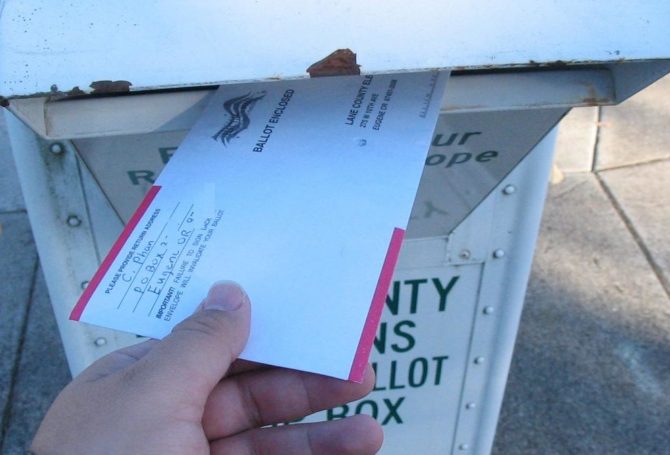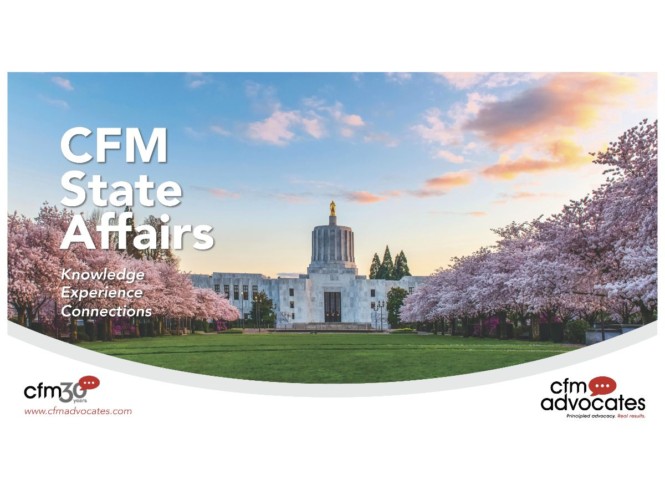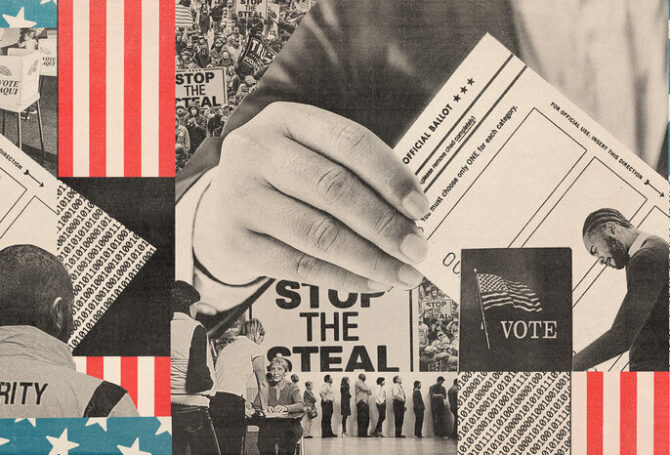
Options Include Ranked-Choice Voting, Fusion Voting and Open Primaries
Passage of charter reform in the City of Portland has generated buzz about ranked-choice voting (RCV) replacing Oregon’s closed-primary system that denies 1.2 million registered voters a chance to vote for Democratic or Republican nominees.
RCV allows voters to vote for up to five candidates in order of preference. If no candidate in a race secures more than 50 percent of first-choice ballots, then counting continues in new rounds. Advocates tout RCV as “consensus-based” voting rather “majoritarian”. Opponents say RCV is confusing, complicated and violates the principle of “one person, one vote”.
Alaska and Maine use RCV in statewide elections. In the November election, incumbent Republican Senator Lisa Murkowski faces an “instant run-off” after failing to receive more than 50 percent of first-choice votes. Her closest rival is fellow Republican Kelly Tshibaka, who received around the same 43 percent of first-choice votes. In round two, the fourth-place finisher will be eliminated, and second-choice votes added to first-choice votes to determine a winner.
Washington employs a top-two primary that advances the two candidates with the most votes, regardless of party affiliation, to the general election. In Washington’s Third Congressional District primary in August, Democrat Marie Perez gathered the most votes while Republican Joe Kent edged out incumbent GOP Congresswoman Jamie Herrera Beutler for the second general election slot. Perez narrowly defeated Kent in the general election.
What’s notable about the Alaska and Washington election systems is that the candidates who end up winning primaries are almost always Democrats and Republicans.
Oregon’s Closed-Primary
Oregon’s closed-primary system excludes more than half of the state’s registered voters, but it may not matter because a majority of legislative and congressional seats are configured to give Democrats or Republicans a virtually unassailable electoral edge. Switching to ranked-choice voting or a top-two primary format won’t markedly change who is on general election ballots.
However, as the ranks of non-affiliated voters continues to grow, there is unease over these voters being frozen out of primary elections. When registering to vote, Oregonians can choose to align with a major or minor party or to remain unaffiliated. Oregon’s automatic motor voter registration process doesn’t require people to make any choice; they just are listed as non-affiliated by default.
Despite Oregon’s vote-by-mail system that makes voting easy and accessible, many state leaders would like to see larger turnouts in primary elections, especially in midterm elections. That concern has generated a mostly back-corridor conversation about revising the state’s closed primary system. But there may be ideas that are less radical ideas that could enlarge turnout – fusion voting and an opt-in primary choice.
Fusion Voting
Fusion voting, which is already allowed in Oregon and seven other states, allows a candidate to stand for more than one political party in general elections, thereby increasing the influence of minor parties. The 200,000 Oregon registered voters who identify as members of minor political parties can’t vote for major party candidates in a closed primary can wield influence in a general election by endorsing major-party candidates that reflect their values or issues.
Skeptics say fusion voting gives disproportionate influence by minor parties at the expense of other voters who have no voice in selecting partisan candidates in primary elections. Advocates disagree, saying their endorsements help differentiate rival Democratic and Republican candidates in general elections.
Opening Primaries to Unaffiliated Voters
But that still leaves a lot of Oregonians without a vote for partisan candidates in primary elections. A significant change would be for major party leaders to unlock their monopoly for the limited purpose of allowing non-affiliated registered voters a chance to make a one-time choice to vote in the Democratic or Republican primary.
True-believer partisans argue this would dilute political party agendas and allegiance. Others believe creating an opening would invite wider participation by voters who disdain partisanship but may find a particular candidate in a primary election appealing.
Party bosses could calm their anxieties by viewing the potential of temporarily enrolled non-affiliated voters as an opportunity to grow their ranks by inviting them to register as a Democrat or Republican.
The mixed effects of fusion voting and more open primaries should encourage higher voter turnout in primary elections, a positive outcome. Making it okay and advantageous to broaden support by recruiting non-affiliated voters and collaborating with minor political parties can be a hedge against dependency on big-money politics.
The American system of government, unlike parliamentary democracies, revolves around a two-party axis. Put another away, the American political tug-of-war is fought with a rope with only two ends. It’s been that way since the Founding Fathers, who detested factions, resorted to them.
History of Participatory Democracy
Over time, American politics has moved toward more participatory processes in choosing elected representatives. The first popular elections for US senators occurred in 1914 following passage of the Seventeenth Amendment. States began holding primary elections in the early 1900s to mitigate the control and corruption of party bosses. Oregon was among the early leaders in the primary movement. Oregon held its first primary to select partisan candidates in 1910.
Fusion voting was common in the 19th Century, giving rise the Populist Party. After the Populit Party threw its weight behind Democratic presidential nominee Grover Clevelend, Republican lawmakers moved to scale back fusion voting. The US Supreme Court on a 6-3 ruling in 1997 said Minnesota’s ban on fusion voting did “not unconstitutionally burden” First and Fourteenth Amendment rights of minor parties.
In New York, which allows fusion voting, there are two prominent minor parties that co-endorse candidates. The Working Families Party tends to endorse Democrats and the Conservative Party leans toward Republicans. In Oregon, the Independent Party endorses partisan candidates.
Fusion voting is viewed by its supporters to give third-party members a candidate to support in primary elections. Some advocates believe third-party endorsements of candidates is an antidote to political extremism. Critics aren’t so sure.
As Oregon’s three-way gubernatorial race attests, third-party candidates, even when well-funded, tend to be postscripts to election outcomes. Betsy Johnson’s high-profile campaign attracted nearly 20 percent in polls but netted less than 10 percent of the total general election vote. Republicans thought that might be enough to tip the election to their candidate and Democrats fretted Johnson was drawing away more disenchanted Democrats than Republicans.
The ”wasted vote” argument for ballots cast for third-party candidates in general elections underscores the need to open primaries to any Oregonian who wants to vote. It’s likely a hefty percentage of unaffiliated registered voters don’t care whether they can vote in a partisan primary election. For those that do want to participate, offering an option to align with a major political party for a particular primary gives them that opportunity with no strings attached.
Allowing motivated unaffiliated voters access to partisan primary ballots should increase total turnout but whether it would benefit conservative, moderate or liberal candidates is hard to predict.
Allowing motivated unaffiliated voters access to partisan primary ballots should increase total turnout but whether it would benefit conservative, moderate or liberal candidates is hard to predict. A significant number of one-time primary voting privileges with either Republicans or Democrats is more likely to result from a particular motivating issue as opposed to a magnetic candidate. The possibility of an infusion of new voters probably would have the salutary effect of discouraging incumbents and campaign frontrunners from resting on their laurels.




